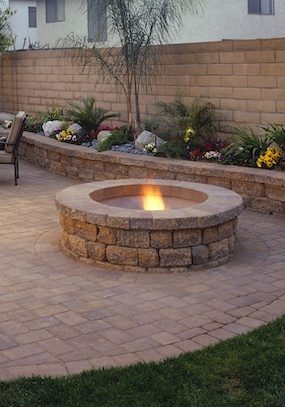
So you have decided to do your own paver installation. This is an excellent way to save money, especially if you are more of a DIY-er around your home. However, it is very easy to make mistakes when installing your pavers, and if it’s not done right the first time, then it can set you back in both time and money.
Here are a few mistakes to avoid when you do your paver installation project.
Also Read: What to Consider When Choosing Driveway Pavers
Paver Installation Mistake 1 – Backfilling with Dirt
Physics plays a large role in these types of projects. Having the proper base for your pavers is important. If you use dirt, because it’s so malleable, your pavers run the risk of sinking, rotating, or even separating during and after the installation.
A big reason for this is that when dirt is compacted, the surface area shrinks by about 30%. And the kicker is that this isn’t always instant. This happens over time and over a lot of use. So, within a few months, or a few years, depending on how often those papers are used, 10 inches of dirt turns into 7 inches of dirt. And then you’ll have to start all over.
A better solution is to use gravel or another type of less malleable material that is spread as smoothly as possible. The more stable your base, the less settling occurs. The less settling occurs, the less chance you have of your pavers sinking, rotating, or separating over time.
Paver Installation Mistake 2 – Laying a Shallow Base
This ties in directly with the first mistake that is made. For most folks who use dirt as their base, they may think that they have enough to make a sufficient base only to discover later after it settled that it wasn’t nearly enough.
It’s the same if you use a more solid base as well. And the amount you need to dig and fill depends on the location of your paver installation project.
Driveways and parking lots – 6 to 10 inches
Patios and other areas – 4 to 6 inches
In colder areas or areas that have wetter or weaker soil, you may need to add 2 to 4 inches to your hole.
Paver Installation Mistake 3 – Not Compacting the Base
Just like installing a shelf, you need a level surface, so your pavers are level as well. If you don’t, just like a shelf that isn’t level, your pavers won’t stay in place.
The best thing to do would be to make sure your base is as level as possible, allowing for no more than an eighth of an inch or random rises. After use, especially if you are using a gravel base, those little bumps will even out with the rest it. If you use a compactor, make sure you go both horizontally and vertically to ensure everything is as level, and compact, as possible.
Paver Installation Mistake 4 – Improper Bedding Sand Installation
The confusion is understandable here. Through three sections, it was mentioned that dirt is the worst thing for your installation. To clarify, it’s only bad if it’s your base. Your bedding sand helps hold your gravel in place so your installation can be level.
However, if you do it wrong, you can leave gaps and holes in your paver installation and resulting in those bumps, dips, and other issues we talked about.
To install it correctly, you perform a process called “screeding”. This is where you lay a beam about 1 inch outside of your gravel base and lay down the sand. After compacting the sand to fill any gaps in the gravel, you use the beam to level the sand across the entire base.
Just as a rule of thumb, you don’t want more than an inch of sand over the base, or you could run into the same issues as you would with just a plain dirt base.
Paver Installation Mistake 5 – Ignoring “Click and Drop”
After you have your bedding sand in, it’s time to move to the actual pavers themselves. However, this installation mistake can create two problems.
The first is displacing the sand you leveled out. The second is filling the gap with that very sand.
Most pavers are already made with spacers, so putting more space between the pavers can result in an uneven project that will need to be replaced later on.
The best solution to this is known as the “Click and Drop” Method. Basically, instead of placing the pavers on the ground first and sliding them into place, you “click” the paver against the edge of another, just an inch off the ground, and drop it in.
Paver Installation Mistake 6 – Linear Lines
The point of your pavers is not only to provide stability for yourself, your family, and your vehicles but also to improve the beauty of your home. However, if you sacrifice one for the other, you end up losing both.
Before you start installing your pavers, make sure you have a pattern ready to go. It’s also a good idea to not allow four corners to meet and do not have a line that goes for more than 9 feet.
With these common mistakes to look out for and avoid, you can find yourself installing an excellent driveway and patio for your home.


 Get In Touch
Get In Touch
Recent Comments